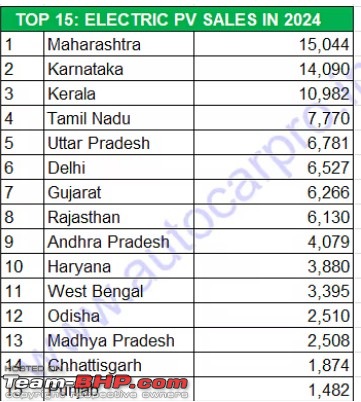Highlights:
- 2024 registered the highest-ever yearly wholesales of 42,86,423 vehicles, but the growth rate moderated to 4.6%
- 3,97,921 vehicle sales make October 2024 the best sales month in history
- Mahindra (22%) & Toyota (36%) outpaced Indian market growth
- All manufacturers offered discounts to prop up sales in the second half of - 2024
- Tata Punch became the best-selling car in 2024
- Strong demand for SUV, crossover, and MUV body-style products is the major growth driver in 2024
- Hyundai Motor India came up with India’s largest IPO ever, raising $3.3 billion in 2024
Indian mass market passenger vehicle industry:
- The Indian passenger vehicle industry posted the highest-ever wholesale of 42,86,423 cars (dispatch from brands to their dealers) in 2024; however, the growth rate has considerably moderated to 4.6%.


The early 2024 growth rate was higher due to the lower base effect of 2023, which can be regarded as the tail end of the supply-side shortage phase induced by the COVID-19 pandemic. However, the month-over-month growth rate has started tapering downward as India progressed through different phases of the general election beginning in April 2024. Post-election results: growth remained muted during monsoon. Post-September brands resorted to heavy discounting on products to prop up flagging demand. Diwali this time came as big relief as retail sales spiked suddenly, relieving dealerships with piling stock. Post festivities, wholesale remained high towards year end; however, retail remained in slight red with discounting continuing further. Seasonality does not come into play here, as it is a comparison of the same month in a different year.
 Decoding growth path
Decoding growth path:
The Indian passenger vehicle CAGR (Compound-Annual-Growth-Rate) in series, with 2005 as a common base year. Growth in 2024 was on the lower side compared to 2022 and 2023, which is not a good sign from a long-term perspective, as Indian GDP growth too has slowed down to 5.4% in Q3 2024 CY.
 Brand Growth
Brand Growth:
- Besides Mahindra and Toyota, no other brand had a healthy growth rate in 2024. Both brands outpaced industry growth rates with significant volume and market share growth.
-Volume growth for the top three players—Maruti, Hyundai, and Tata—was almost flat, and all of them ceded market share in 2024.
- Honda, Renault, Skoda, Citroen, and Jeep have suffered massive de-growth in 2024.

Products driving Industry Growth:
- 2024 Volume Change over 2023

- Besides the Maruti Ertiga and Mahindra Scorpio, growth was driven by products that are either entirely new or have undergone a facelift in 2023 or 2024.
- Tata Punch’s massive growth can be attributed to the addition of CNG and EV drivetrains in mid-2024 and early 2024, respectively.
-The top 10 growth driver list is constituted by products with SUV or crossover body styling.
-
Products that dragged down growth in 2024 were composed of hatchbacks and sedans, with the Kia Seltos being the only exception here.
-The point is that a product with the right value proposition can still grow in a slowing market by eating up the market share of others or creating a new demand entirely, as can be seen in the cases of Mahindra Scorpio or Maruti Ertiga.
2024 Impact on body style:

Despite a slowdown in the overall growth rate, the SUV and crossover segment posted healthy volume and market share growth. As brands too focused on this body style to address changing consumer preferences in India. The MUV segment was another growth engine due to higher outstation tours in the post-pandemic era. Hatchbacks suffered massive de-growth in 2024, and their market share was reduced to a mere 24%.
Sedan continued on the path of decline.
Outlook in 2025:
The future growth path for 2025 will now depend on GDP growth and evolving consumer sentiments, which don’t seem to be very buoyant as of now. Nearly all brands have announced a steep price hike in early 2025. Brands here need to be cautious with pricing and dealer stock levels for the sustainability of the overall business ecosystem because pent-up demand is long gone, and car price inflation will result in an impact on demand. Higher marketing spend too may not bring higher sales growth, but a sensible pricing strategy and discounting can arrest sales fall in an unseen future.
2025 will also see the introduction of mass EV's giving more options to buyers, but their market remains to be seen.
Link: 
 (15)
Thanks
(15)
Thanks

 (7)
Thanks
(7)
Thanks

 (7)
Thanks
(7)
Thanks

 (8)
Thanks
(8)
Thanks
 (1)
Thanks
(1)
Thanks
 (1)
Thanks
(1)
Thanks


 (4)
Thanks
(4)
Thanks

 (2)
Thanks
(2)
Thanks


 (1)
Thanks
(1)
Thanks








































